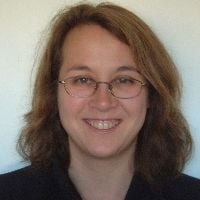Citizen Science and Crowdsourcing for Land Use, Land Cover and Change Detection
A special issue of Land (ISSN 2073-445X).
Deadline for manuscript submissions: closed (31 May 2019) | Viewed by 33302
Special Issue Editors
Interests: citizen science, crowdsourcing and volunteered geographic information (data collection, quality assessment, creating added value products with VGI, motivation and engagement, etc.); land cover/land use validation; creation of hybrid land cover products; serious gaming; sustainable development goals (SDGs)
Special Issues, Collections and Topics in MDPI journals
Interests: spatial data validation and quality assessment; land use land cover mapping; volunteered geographic information; spatial data integration; remote sensing
Special Issues, Collections and Topics in MDPI journals
Special Issue Information
Dear Colleagues,
There are an increasing number of citizen science projects and crowdsourcing applications emerging in the field of land use, land cover, and change detection, e.g., Geo-Wiki, LACO-Wiki and citizen observatories (e.g., LandSense, groundtruth2.0, scent and GROW). Visual interpretation of very high resolution satellite imagery from Google Earth and Bing provide a valuable source of training data for classification algorithms, as well as reference datasets for validation of land use, land cover, and change over time. OpenStreetMap (OSM) is a successful example of citizen-based mapping of the world, which is very rich in detail and contains land-use information that is difficult to map using remote sensing alone. OSM can also be converted to land use and land cover maps, with new applications emerging, e.g., the OSM Land Use and Land Cover application developed at the University of Heidelberg and new tools for conversion of OSM to land use and land cover developed at the University of Coimbra. Additionally, due to the continuous updates to OSM, this product can be used for change detection, particularly in urban areas. Disaster response is greatly aided by volunteers through mapping affected areas, recognition of damaged areas from satellite or drone imagery, and manual filtering of tweets. Citizens are becoming an integral part of land-monitoring systems via citizen science and crowdsourcing activities. This Special Issue aims to bring together state-of-the-art research in this field.
We invite papers on any aspect of citizen science and crowdsourcing related to the development and validation of land use and land cover maps, or for change detection of land use and land cover. We will also consider disaster-related topics if they are related to the mapping of land cover or land use. Papers on data quality arising from citizen-contributed data in this field are also welcome, as are papers that consider project design, data standards, interoperability, data privacy, and motivational aspects of participation, among other topics relevant to the overarching theme of this Special Issue.
Dr. Linda See
Dr. Cidália Costa Fonte
Guest Editors
Manuscript Submission Information
Manuscripts should be submitted online at www.mdpi.com by registering and logging in to this website. Once you are registered, click here to go to the submission form. Manuscripts can be submitted until the deadline. All submissions that pass pre-check are peer-reviewed. Accepted papers will be published continuously in the journal (as soon as accepted) and will be listed together on the special issue website. Research articles, review articles as well as short communications are invited. For planned papers, a title and short abstract (about 100 words) can be sent to the Editorial Office for announcement on this website.
Submitted manuscripts should not have been published previously, nor be under consideration for publication elsewhere (except conference proceedings papers). All manuscripts are thoroughly refereed through a single-blind peer-review process. A guide for authors and other relevant information for submission of manuscripts is available on the Instructions for Authors page. Land is an international peer-reviewed open access monthly journal published by MDPI.
Please visit the Instructions for Authors page before submitting a manuscript. The Article Processing Charge (APC) for publication in this open access journal is 2600 CHF (Swiss Francs). Submitted papers should be well formatted and use good English. Authors may use MDPI's English editing service prior to publication or during author revisions.
Benefits of Publishing in a Special Issue
- Ease of navigation: Grouping papers by topic helps scholars navigate broad scope journals more efficiently.
- Greater discoverability: Special Issues support the reach and impact of scientific research. Articles in Special Issues are more discoverable and cited more frequently.
- Expansion of research network: Special Issues facilitate connections among authors, fostering scientific collaborations.
- External promotion: Articles in Special Issues are often promoted through the journal's social media, increasing their visibility.
- e-Book format: Special Issues with more than 10 articles can be published as dedicated e-books, ensuring wide and rapid dissemination.
Further information on MDPI's Special Issue policies can be found here.






